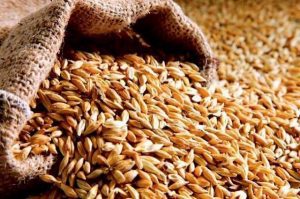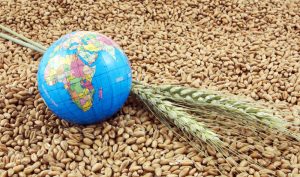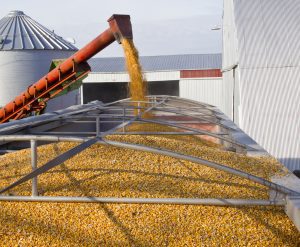
The Ministry for Strategic Industries of Ukraine has identified five priorities in its activities for the current year, including increasing exports, the creation of two state-owned holding companies Defense Systems of Ukraine and Aerospace Systems of Ukraine as well as the Defense Technology Agency.
According to the message on the ministry’s website, two other priorities are rule-making and implementation of process of corporatization of Ukroboronprom enterprises, on the basis of which it is planned to form two new state-owned holdings.
Among the main documents that need to be approved this year, the ministry named the Strategy of development of the defense-industrial complex of Ukraine, the National target scientific and technical space program of Ukraine for 2021-2025, the State target scientific and technical program of development of the aviation industry of Ukraine for 2021-2030 and the National complex program of high science-intensive technologies as well as the State Defense Order for 2021.
Speaking about the Defense Technology Agency, the Ministry for Strategic Industries named the Defense Advanced Research Projects Agency (DARPA) of the U.S. Department of Defense as an example of such a department. “The mission of the agency will be to introduce scientific and technical solutions and new technologies to create modern types of competitive weapons and military equipment,” the ministry said.

Ukraine exported in the current 2020/2021 marketing year (MY) and as of January 15 some 27.2 million tonnes of grain and legumes, while in the previous MY and as of January 20, some 33.9 million tonnes were supplied to foreign markets, the Economy Ministry said at its website with a link to the data of the State Customs Service.
“In the current 2020/2021 MY, some 12.6 million tonnes of wheat have already been exported. It fully meets the planned dynamics that we have agreed on with the specialized associations by signing the corresponding annex to the Memorandum of Understanding on the Grain Market,” Minister of Economic Development, Trade and Agriculture of Ukraine Ihor Petrashko said.
The Economy Ministry said that out of 27.2 million tonnes of grains and legumes, in addition to wheat, 3.9 million tonnes of barley, 1,700 tonnes of rye and 10.3 million tonnes of corn were also supplied to foreign markets. In addition, 81,500 tonnes of flour in terms of grain were exported.
As reported, in the 2019/2020 marketing year and as of January 20, 2020, Ukraine exported 15.5 million tonnes of wheat, 3.8 million tonnes of barley and 14.2 million tonnes of corn, as well as 207,000 tonnes of flour in terms of grain.

The Ukrainian Chambers of Commerce and Industry and export organizations assess the opportunities for the export of Ukrainian products on a 10-point scale at 7.5, and note the need for state support for export activities, which should provide for financial, legal, communication and infrastructure direction.
According to the research “Analysis of institutional support for exports among organizations of the agrarian sector of Ukraine” of the Agritrade Ukraine project, the text of which is available to the Interfax-Ukraine agency, the average assessment of the opportunities for the export of Ukrainian products on a 10-point scale (where one is very poor opportunities, while ten is very good) by participants in the study was 7.5.
Among the main factors of such an assessment were named a high existing demand abroad, good qualifications and experience of industry employees, favorable agro-climatic conditions.
At the same time, the participants in the research noted that the implementation of the export potential is impossible in full due to a saturated competitive environment, insufficient level of harmonization of production and processing standards, the complexity and lack of information about the features of certification and the inertia of some domestic farmers.
More than three quarters of the organizations (77%) that that took part in the survey noted that they have established cooperation with companies from the EU countries. Among the main problems that arise in this process and become obstacles to cooperation, they named a small amount of quotas for certain types of agricultural products, non-compliance with quality standards and certification standards, a saturated competitive environment.
Assessing the compliance of domestic agricultural products and food products with European quality standards, almost three quarters of the respondents (72%) noted that they were more likely to comply, 12% of the survey participants were sure of absolute compliance.
Approximately one fifth of the organizations (22%) that took part in the survey can fully satisfy the requests of Ukrainian companies to establish trade relations with foreign companies and companies from the EU countries (that is, 90-100% of requests).
Among the main factors that affect the ability to satisfy the requests of Ukrainian companies to establish trade relations with foreign companies and companies from the EU countries, the survey participants most often named a lack of practical experience of employees, a lack of knowledge of business English and export-import legal framework, a limited access to market information (supply-demand), lack of analytical skills and tools, the volume of quotas for the export of certain types of agricultural products, limited and insufficient advertising and marketing budgets.

The volume of Ukrainian exports of goods in October amounted to $4.69 billion, which is 1.31% higher than the same month in 2019 and 10.41% higher compared to September this year.
Deputy Minister of Development of Economy, Trade and Agriculture, Trade Representative of Ukraine Taras Kachka said on Facebook, so far in the first 10 months of the year (year-on-year), exports showed a decline of 4.82%, imports – 12.21%.
“More good news: we have reduced the deficit by $3.97 billion, that is, more than a half,” he wrote.

As of November 2, Ukraine exported 16.55 million tonnes of grains and legumes since the beginning of the new 2020/2021 marketing year (July-June), which is 3.1 million tonnes less than on the same date last MY.
According to the information and analytical portal of agro-industrial complex of Ukraine, to date, 10.65 million tonnes of wheat (less by 1.03 million tonnes), 3.37 million tonnes of barley and 2.47 million tons of maize (less by 1.92 million tonnes) have been exported.
As of November 2 of this year, 62,700 tonnes of flour were exported as well.
As reported, Ukraine exported record 57.2 million tonnes of grains, legumes and flour in 2019/2020 marketing year, which is 13.5% more than in the previous marketing year.

Ukraine exported 15 million tonnes of grains and legumes since the beginning of the new 2020/2021 marketing year (July-June) and as of October 26, which is 2.94 million tonnes less than on the same date of the last MY.
According to the information and analytical portal of the agro-industrial complex of Ukraine, to date, 10.11 million tonnes of wheat (less by 810,000 tonnes), 3.3 million tonnes of barley and 1.54 million tonnes of maize (less by 2.05 million tonnes) have been exported.
As of October 26 of this year, 60,000 tonnes of flour were exported as well.
As reported, Ukraine exported record 57.2 million tonnes of grains, legumes and flour in the 2019/2020 marketing year, which is 13.5% more than in the previous marketing year.